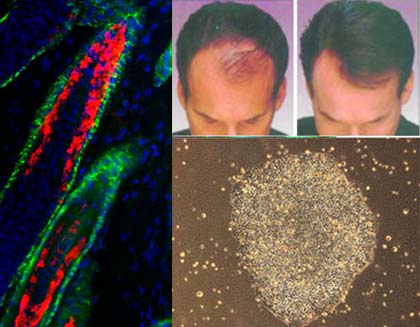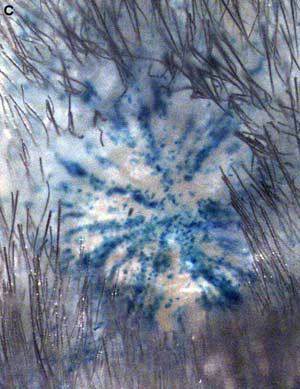In adult mice, their skin contains stem cells capable of producing skin and hair. Although this result was anticipated, the recent publication is considered the first clear evidence that skin cells are indeed stem cells with the potential to generate new tissues. This new discovery is hoped to pave the way for treatments for baldness and burn injuries.
 |
|
Dr. Elaine Fuchs (Photo: searlescholars) |
Elaine Fuchs and her colleagues at Rockefeller University in New York isolated cells from hair follicles in mouse skin, then demonstrated whether these were stem cells by searching for specific proteins and genes that are only present in stem cell lines.
The researchers took individual cells and cultured them to create hundreds of thousands of copies, then grafted them onto a hairless wound on a mouse’s back.
The cells grew to form patches on the mouse’s fur, containing skin, follicles, hair, and sebaceous glands.
Fuchs stated, “The hair appeared quite dense. They looked just like a normal coat.” She also mentioned that this is the first work to show that individual cells isolated from hair follicles can create copies of themselves and produce countless replicas of tissue when grafted—formed from true stem cells. The group’s research results were published in the journal Cell.

Elaine Fuchs’ stem cell hair regeneration research
(Photo: biotech)
Incomplete Success
 |
| George Cotsarelis’ stem cell research (Photo: eurekalert) |
George Cotsarelis from the University of Pennsylvania, who has isolated similar stem cells, said: “The next significant step in this field is likely to move towards using human tissue.”
“If humans are similar to mice, researchers could use a similar method to isolate stem cells,” Fuchs remarked. These cells could be cultured and re-implanted in bald areas of the scalp or wounds, with the hope that they would then form new, suitable skin or hair.
This is also a much better method for treating baldness compared to current approaches. Hair transplant methods involve moving patches of hair or any excess hair to cover bald spots, which often yield imperfect results.
Medications like Propecia, which affect male hormone levels, can slow hair loss in some men. However, continuous use of these medications has prevented some individuals from using them.
Similar grafting methods could be applied for treating burn patients. Currently, patients receive a skin graft that does not contain hair follicles or sweat glands. The stem cells grafted onto the skin may have the potential to produce all forms of missing cells, Fuchs stated.


















































